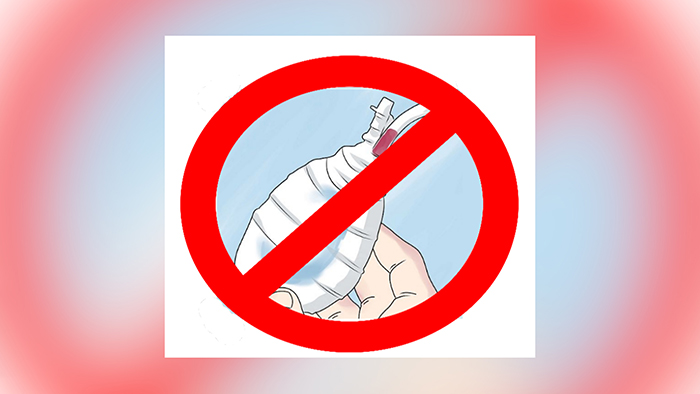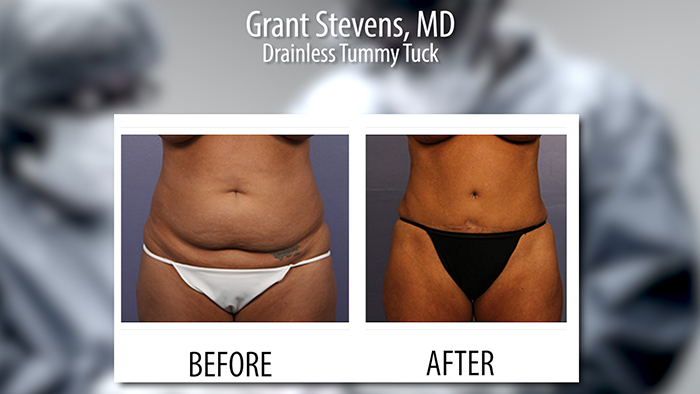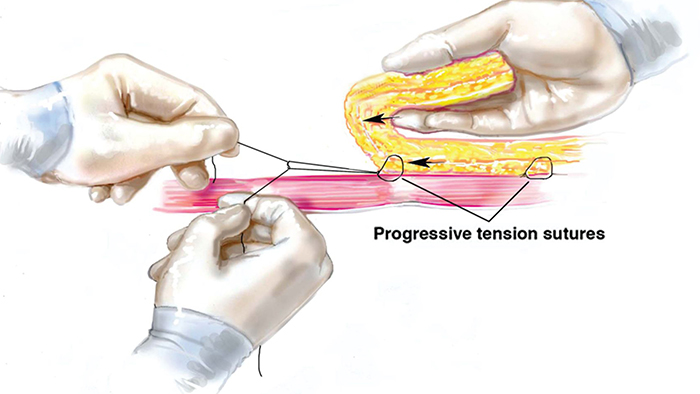Tummy tuck surgery takes place in two distinct layers of the abdomen. Deep in the abdomen the muscle and fascia layer of the abdominal wall are surgically tightened, providing a firm foundation for a flat stomach. Superficially, fat and skin are removed in order to tighten and contour the outer abdomen. These two layers that were connected prior to surgery are separated during surgery. This separation creates a space, a pocket, where fluid tends to collect while the body heals. Unfortunately, these fluid collections, called seromas, slow down the healing process.
by Anne Meyer
and Grant Stevens, MD
How do you Prevent Seromas?
To aid in recovery, plastic surgeons routinely insert drainage tubes into the space between the two layers during surgery, creating a vacuum pressure that draws the fluid from inside the body to plastic bulbs, or reservoirs outside of the body. These drains are called Jackson-Pratt drains and they can be a nuisance.
The Trouble with Drains
Drains make showering and dressing in the early post-surgery period even more difficult. They add an additional risk of infection to the surgical site. They must be emptied several times each day and their removal, which normally occurs anywhere from several days to a week or more after surgery, can be uncomfortable. The tubes commonly exit the body in the pubic region and may result in additional small scars.

Is There An Alternative to Drains?
Board certified plastic surgeon Dr. Grant Stevens has been doing tummy tucks on patients for over thirty years. Until recently, he himself utilized drains for every single tummy tuck patient. “In my particular case, I’m the third of three surgeons in my practice, and I’m the oldest one, and it was my younger surgeon colleagues that blazed the trail for drain-less tummy tucks. I watched them do it, and I was the last one to try this drain-less tummy tuck business. We’ve done a study now of over five hundred patients. With progressive tension quilting sutures and no drains, our patients had a lower complication rate than the patients with drains,” shares Dr. Stevens.

What are Progressive Tension Sutures?
Progressive tension, or quilting sutures, address the cause of the problem, instead of simply relieving the symptom. Additional sutures are added during surgery to secure the two internal layers to each other. Once the space is closed there is no longer a pocket for fluid to collect in. As a result, fluid does not collect.
“I wouldn’t consider draining them now. I tack them down with the quilting sutures and we don’t use drains,” Stevens explains. “You don’t have the hassle, you don’t have the mess, you don’t have the scars, and you don’t have the pain of the drains – taking them out, and leaving them in. Patients LOVE drain-free tummy tucks. The whole subject is really exciting because we’ve now proven, without a doubt, that drain-free tummy tucks are better than tummy tucks you drain.”

Most advances in the field of plastic surgery today involve high tech devices. The beauty of the evolution to a drain-less tummy tuck is that it takes a suturing technique, the foundation of surgery, and provides a new application to improve upon an age old problem. By incorporating additional sutures at the time of surgery, the hassle of drains can become a thing of the past.















Facebook
Twitter
Instagram
YouTube
RSS